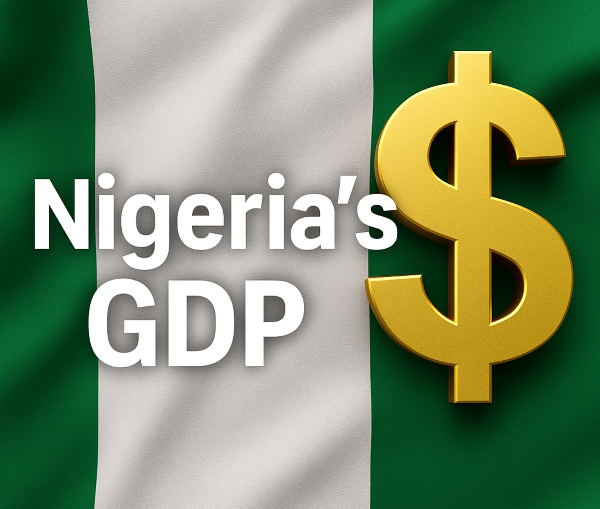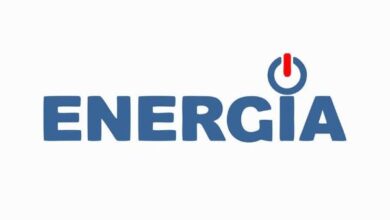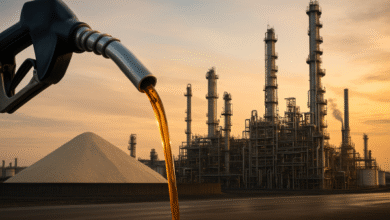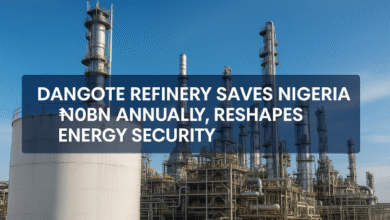Nigeria’s GDP Quickens to 4.23% in Q2 2025: Industry, Oil and Services Drive Momentum

The Nigerian economy posted stronger growth in Q2 2025, with GDP expanding by 4.23% year-on-year. A revitalised industrial sector, higher oil output and resilient services underpinned the rebound, while agriculture stabilised. Nominal GDP surged to ₦100.73trn as reforms, investment signals, and policy execution shape the next phase of growth.
Headline Growth: Stronger Than Expected
The National Bureau of Statistics (NBS) has confirmed that Nigeria’s Gross Domestic Product (GDP) rose by 4.23% in Q2 2025, a clear step-up from the 3.48% recorded in Q2 2024 and 3.13% in Q1 2025.
Nominal GDP hit ₦100.73 trillion, a 19.23% year-on-year jump from ₦84.48 trillion, reflecting both inflationary price effects and real output expansion. Importantly, the report is benchmarked to the rebased 2019 GDP series, providing a refreshed framework for economic analysis.
For an economy battling inflation, FX volatility, and power bottlenecks, the data offers both encouragement and caution: Nigeria is growing faster than expected, but sustaining this trajectory will demand discipline, reforms, and execution.
Industry: The Standout Performer
The industry sector emerged as the engine of Q2’s growth, expanding by 7.45% year-on-year, more than double its performance a year earlier. Within this:
- Mining & Quarrying surged 20.86%, lifted by oil, gas, coal, and solid minerals.
- Quarrying and other minerals grew by a staggering 50.41%.
- Coal mining expanded 32.59%, reflecting momentum in Nigeria’s energy diversification agenda.
Industry contributed 17.31% of GDP in Q2 2025, up from 16.79% in Q2 2024.
Investor implication: Industrial rebound signals opportunity in extractives, energy services, EPC, logistics, and supply chains. Policy alignment around beneficiation and local processing creates new lanes for midstream and downstream investors.
Oil Sector: From Drag to Driver
For years, oil underperformance weighed on headline growth. Q2 2025 was different.
- Average crude oil production: 1.68mbpd, up from 1.41mbpd (Q2 2024) and 1.62mbpd (Q1 2025).
- Real growth: +20.46% (vs 10.08% in Q2 2024; 1.87% in Q1 2025).
- GDP share: 4.05% (up from 3.51% in Q2 2024).
Oil’s renewed contribution adds much-needed stability to fiscal revenues and FX inflows, even if its share of GDP remains small.
Investor implication: Renewed production momentum improves the case for upstream JVs, FPSO upgrades, and gas-to-power infrastructure, but risks around theft, security, and FX repatriation remain.
Agriculture: Modest but Stabilising
Agriculture grew 2.82%, up from 2.60% a year ago and virtually flat (0.07%) in Q1 2025. Crop production continues to dominate output.
Sector share: 26.17% of GDP (slightly down from 26.53% in Q2 2024).
Investor implication: Growth is modest, but irrigation (boosted by NASENI’s solar pump rollout), mechanisation, and value-chain investments remain critical. Crop stability is key to food inflation management and rural incomes.
Services: Resilient and Diverse
The services sector grew 3.94%, steady compared with 3.83% in Q2 2024. It remains Nigeria’s most diversified driver:
- Trade: 18.28% of GDP, growth 1.29% (slower than 1.82% in Q2 2024).
- ICT: +6.61% growth, GDP share 11.18% (Q2 2024: 10.93%). Telecoms, fintech, and data hosting drive this resilience.
- Finance & Insurance: +16.13% growth vs 0.30% in Q2 2024. GDP share 3.23%. This surge reflects stronger banking and digital financial services penetration.
- Transportation & Storage: +22.09% growth. Though small (0.65% of GDP), it signals logistics resilience and post-subsidy adaptations.
- Utilities (Electricity, Gas, Steam, AC): +11.47% growth; GDP share 1.23%.
- Water, Waste, Remediation: +10.60% growth.
Investor implication: Services remain a high-growth, capital-light play. Digital infrastructure, fintech, logistics, energy efficiency, and utilities are outperformers.
Manufacturing & Construction: Mixed Signals
- Manufacturing: Growth slowed to 1.60%, down from 2.07% in Q1 2025. Share dipped to 7.81%. FX, energy, and input costs continue to drag.
- Construction: +5.27% YoY growth, but -21% QoQ contraction. GDP share 3.60%.
Investor implication: Construction remains cyclical and project-driven, while manufacturing needs policy clarity on FX, energy subsidies, and trade facilitation to return to robust growth.
BRANDECONOMY Analysis: Reading Between the Lines
- Momentum returning: At 4.23%, Nigeria’s growth is faster than Sub-Saharan Africa’s projected average (~3.5%).
- Non-oil dominance holds: 95.95% of GDP is non-oil, underscoring diversification progress.
- Structural inflation risk: Nominal GDP up 19.23% shows prices remain sticky, masking part of the real gains.
- Policy-sensitive growth: FX management, energy stability, and infrastructure execution remain decisive for sustaining momentum.
- Investor confidence: Growth in finance, ICT, and mining suggests capital is flowing where policy is clearer and demand strong.
Takeaways for Decision-Makers
- Government: Sustain reforms on FX stability, power, ports, and security corridors to keep momentum.
- Investors: Double down on services, energy, ICT, and extractives-adjacent supply chains. Watch manufacturing cautiously.
- Businesses: Hedge currency risk, digitise aggressively, localise value chains, and engage early on ESG.
Consumers: Despite the nominal rise in Nigeria’s GDP Real incomes remain pressured, but stronger services and agriculture can ease inflation if policies align.











